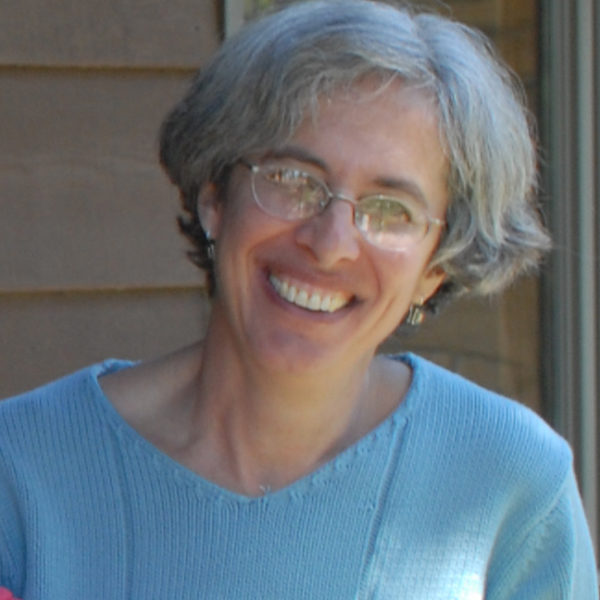
A woman transports her many dogs on a scooter. Image by Johannes Eisele/Agence France-Presse / Getty Images, © All Rights Reserved.
The Distance to Suffering
They are and suffer; that is all they do;
A bandage hides the place where each is living,
His knowledge of the world restricted to
The treatment that the instruments are giving.
And lie apart like epochs from each other.
—W.H. Auden
It’s Monday morning at the Johns Hopkins Hospital. I’m in a conference room in the pediatric oncology clinic where Dr. Ben Olfield and I run a program called AfterWards. Using various forms of storytelling and conversation, our goal is to provide these harried, weary oncologists with an hour of reflection to bolster their compassion and strengthen their resiliency.
This morning our topic is “Bearing Witness to Suffering” — apt for doctors who take care of children with cancer — and we’re using “Surgical Ward,” a sonnet by W.H. Auden to explore it. The Auden poem is one of my favorites and I’m supposed to be thinking about it. Instead I’m thinking about Marie.

A bandage hides the place where each is living.
Marie was my neighbor.
She lived just down the street in a tiny, fairy-tale like cottage tucked into the woods. There was something magical about her, too. She was slight as a sprite, with an elfin face and long, grey hair that fell in waves to her shoulders. She took care of our dog when we were away. She took care of everyone’s dogs. We simply brought them to her house and they lived with her. When she opened her door, they greeted you with a joyous chorus — baying, barking, clamoring.
His knowledge of the world restricted to / The treatment that the instruments are giving.
“Where are the doctors in this poem?” Ben asks. “Do you ever feel so far away from your patients?”
Outside, in the waiting room, the doctors’ patients are huddled on their parents’ laps, some connected to IV poles, others in wheelchairs with white cotton blankets on their knees. The children are thin and silent, almost transparently pale, with knitted caps and distant gazes. Auden is right. Distance is a part of suffering. So is isolation.

And lie apart like epochs from each other.
“But isn’t it risky,” one of the doctors says, “to get too close?”
Intimacy was risky for Marie, too. She kept her distance. No matter how many times I went to her house, she never invited me in. There would be a quick exchange as I dropped my dog off or picked her up. Then the door would close.
Truth in their sense is how much they can bear.
How much suffering can these children bear? How much can their doctors? In the waiting room, the parents look at their children with a stunned ferocity: I will get you through this no matter what. Or they collapse into blankness, overcome by this cruel trick, this reversal of nature, that one day they may have to usher out of the world the child they ushered in.

It is not talk like ours, but groans they smother— / And are remote as plants; we stand elsewhere.
Marie hardly ever spoke to me. That’s just the way she is, I would say to myself. Not a people person. But how she loved dogs! She was supposed to care for ours the previous weekend while we were away. I drove into her driveway on Friday afternoon to drop the dog off.
For who when healthy can become a foot?
Ben looks at me. “Are we ready to write?”
We always write during AfterWards. We believe in writing’s transformative power, in the insights that come when nothing stands between you and the blank page. The doctors grab pens and notepads. “Write,” I say, “about someone you’ve seen suffering. Imagine yourself with that person, in that place. Write what you see, what you feel.”

Even a scratch we can’t recall when cured …
I write, too. Once again I am in Marie’s driveway, opening my car door, putting my dog on her leash, running after her as she joyfully drags me to Marie’s door. The house looks dark, the blinds shuttered, but I don’t have time to think of that. I knock on the storm door.
But are boist’rous in a moment and believe …
The house isn’t just dark; it’s quiet. Eerily so. Where is the barking? Where are the dogs?

In the common world of the uninjured, and cannot …
Then I see the note, tucked into the jamb of the door, so that it will be protected from the rain, so that the neat black lettering on the white paper won’t run. So that it will be legible, waiting for me, when I come to find it. Two lines. Eight words, a couplet, a broken haiku: “Please call police. Resident inside has committed suicide.”

Imagine isolation. Only happiness is shared …
We put down our pens. “What is suffering,” Ben says, “but distance? How can we, as doctors, bridge that gap?”
Sometimes suffering is the distance between a child’s eyes and a doctor’s gaze. It’s the space between a child’s forehead and the palm of your hand. Between two beating hearts. Sometimes suffering is just down the street from you. Sometimes you don’t even know it’s there.
And anger, and the idea of love.
The hour is up. The doctors gather their things and head back to the clinic where their patients await.
I wait in Marie’s driveway for the police to come, wondering about the suffering that took her out of the world, wondering if she, too, could have been saved by the idea of love.
Marie Whitney: 1962-2014

